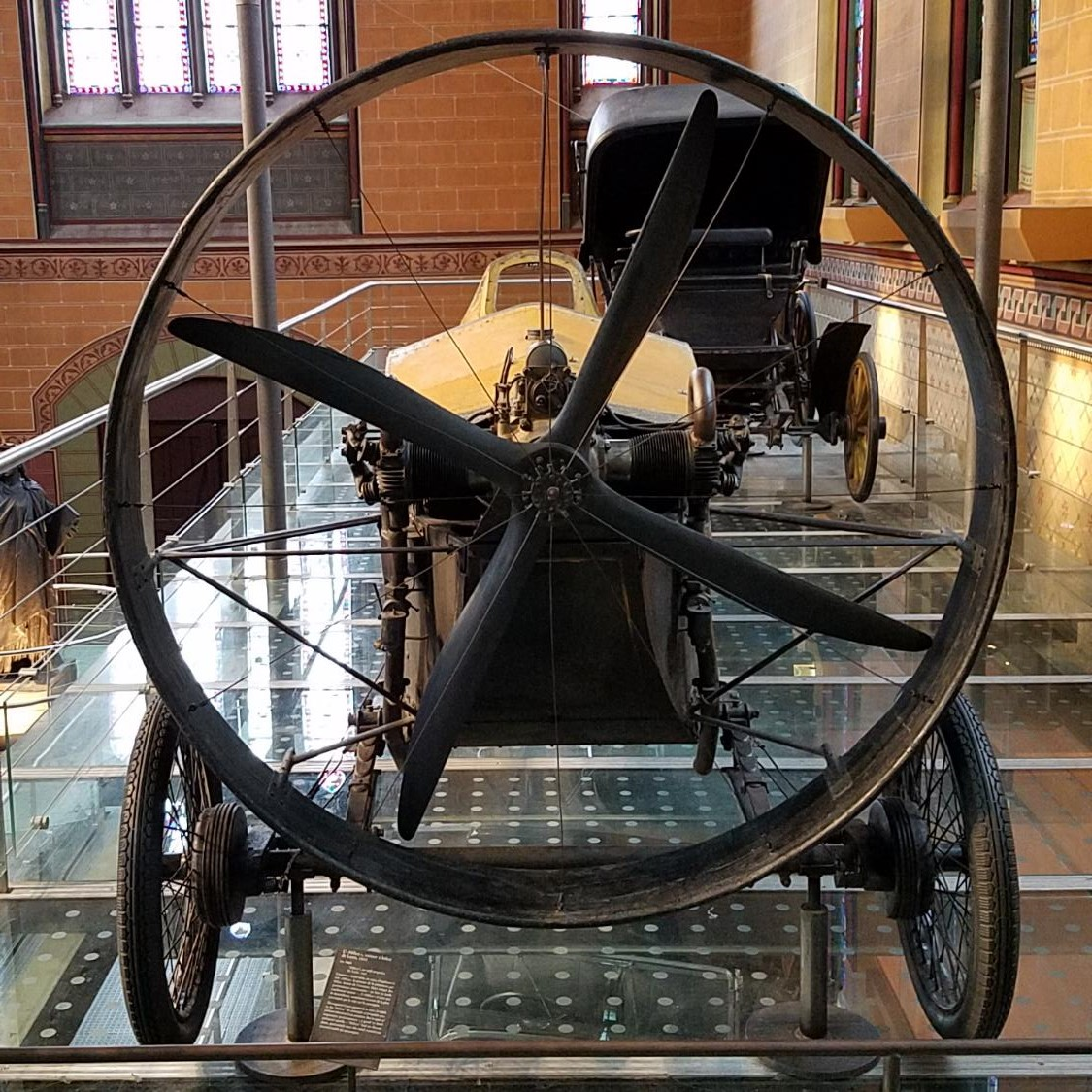Leyat and the Helica
by Chris Miller
Today, car design takes flight. The University of Houston presents this series about the machines that make our civilization run, and the people whose ingenuity created them.
Automotive engineering went into high gear in the early 20th century. Gasoline engines had overtaken steam and electric motors as the preferred source of horsepower. Hundreds of car manufacturers soon sprang up. This led to rapid development of not only the engine, but many features we still see today, such as independent suspension, and 4-wheel brakes. In 1908, Henry Ford built his first Model T - with the first cast engine block and a 2-speed transmission.
This brings us to Marcel Leyat. Born in 1885 in France, Leyat started his career in aviation designing biplane wings. He began building his first airplane in 1909. But he didn't have the money to finish it, because militaries dominated the industry at the time. So, he left airplanes behind and moved to automobiles.
Leyat immediately saw that cars were complicated, heavy, and wasted a lot of energy. Simplifying the vehicle's design would improve both efficiency and reliability. Early cars lost significant power in the transmission and differential. Leyat overcame this by attaching a propeller to the front of the car directly on the engine's drive shaft. He then crafted plywood body panels and Aluminum wheels to reduce weight. He also curved the panels like those on an airplane to cut wind resistance. Leyat called his car, the Helica, from the French word, helise, which means propeller.

Helica frontview
The Helica weighed just 600 lbs., less than 1/2 that of the Model T. It got 48 miles per gallon and could reach speeds over 100 miles per hour, all with an 18-horsepower engine. Leyat premiered the Helica at the Paris Auto Show in 1921, where he received hundreds of inquiries from curious buyers.
As you have probably guessed, the Helica had its flaws. The large propeller restricted the driver's view and produced a constant wind gust over the passengers. The spinning blades were a safety hazard, and they turned into shrapnel in a front-end collision. Later Helica models encased the propeller in a cage and closed the passenger compartment into a type of cockpit. One might say that Leyat's improvements on the horse-less carriage ended up as a wingless airplane.

Helica
Leyat built only 30 Helicas, ultimately selling just 23. He stopped in 1926, because he again ran out of money. He returned to aviation, this time for good.
But this short story of Leyat and the Helica is not one of failure. Leyat produced a series of Helica models, not just a few prototypes. Most importantly, Leyat's aircraft experience gave him a fresh perspective on the car's overall design. Other engineers focused on the engine, but Leyat improved the entire car, reducing its weight and drag. Many credit his curved body panel designs with inspiring research into automotive aerodynamics, which began in the 1930's. Sometimes the view from above can reveal what we're missing when we are too focused on the road ahead.
I'm Chris Miller, along with the University of Houston, where we're interested in the way inventive minds work.
Photos taken by the author (2018).
More information about and pictures of the Helica can be found at: Friends of Helica, Lane Motor Museum, Popular Mechanics, New Atlas, Revivaler, and Wikipedia.
Britannica online, Wikipedia, and History Channel online provide good overviews of the early history of the automobile.
In Engines episode #2191 about steam boilers, Dr. Lienhard demonstrates another case where engineers fell into the trap of focusing on just one part while ignoring the whole system.
This episode was first aired on May 24, 2022